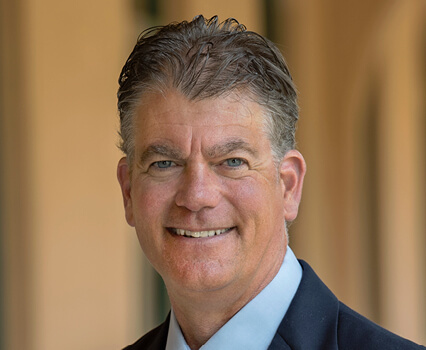The final weeks of 2022 are upon us.
We’re hearing from attorneys, accountants and financial advisors not only that your plates are full as the end of the year approaches, but also that questions from clients are rolling in about charitable giving.
That’s why the Giving Season is the perfect time to remind you about our AMPlify Program.
Participating in our AMPlify (Asset Management Partnership) program allows you to continue managing your client’s wealth (minimum of $250,000) while giving your clients access to our experienced Giving Team.
AMPlify gives peace of mind to your clients who have trusted relationships with you, while allowing them to work directly with us to learn about community needs, regional challenges and impactful nonprofit organizations.
The result is a tax-smart, year-end giving partnership built on trust and expertise.
Learn more about AMPlify and how easy it is to join this December.
In the rest of this newsletter, we’re covering a few of the most talked-about ingredients in the alphabet soup of year-end giving, including donor-advised funds (DAFs) and Qualified Charitable Distributions (QCDs).
Indeed, the confusion around QCDs and RMDs is an example of how acronyms, although intended to be useful, often hamper communication instead.
As always, please reach out to us at San Diego Foundation (SDF). We are here to help you help your clients achieve their 2022 charitable goals.
The 5 Most-Asked Questions About QCDs in 2022
Qualified Charitable Distributions, or “QCDs,” have become a popular financial and charitable planning tool. At the same time, QCDs are growing as the source of more and more confusion.
Here are answers to the questions we’ve been asked most frequently this year by both advisors and donors. Be on the lookout for these and other client questions, and please do not hesitate to reach out to us for assistance.
“Is an IRA (Individual Retirement Account) the only eligible source for Qualified Charitable Distributions?”
Short answer: Almost.
Long answer: An individual can make a QCD directly to an eligible charity from a traditional IRA or an inherited IRA. If the individual’s employer is no longer contributing to a Simplified Employee Pension (SEP) plan or a Savings Incentive Match Plan for Employees (SIMPLE) IRA, the individual may use those accounts as well.
In theory, a Roth IRA could be used to make a QCD, but it is rarely advantageous to do that because Roth IRA distributions are already tax-free.
“What is the difference between a QCD and an RMD?”
Short answer: Quite a bit! But a QCD can count toward an RMD.
Long answer: Everyone must start taking Required Minimum Distributions (“RMDs”) from their qualified retirement plans, including IRAs, when they reach the age of 72. RMDs are taxable income. The QCD, by contrast, is a distribution directly from certain types of qualified retirement plans (such as IRAs) to certain types of charities. When a taxpayer follows the rules, a QCD can count toward the taxpayer’s RMD for that year. And because the QCD goes directly to charity, the taxpayer is not taxed on that distribution.
“Can I make a QCD even if I am not yet required to take RMDs?”
Short answer: Yes–within a very narrow age window.
Long answer: RMDs and QCDs are both distributions that impact retirement-age taxpayers, and it would seem logical that the age thresholds would be the same. Under the SECURE Act, though, the required date for starting RMDs was shifted from 70 ½ to 72 (which is better for taxpayers who want to delay taxable income). A corresponding shift was not made to the eligible age for executing QCDs; that age is still 70 ½ (which benefits taxpayers who wish to access IRA funds to make charitable gifts even before they are required to take RMDs).
“Can I direct a QCD to a charitable fund at SDF?”
Short answer: Yes, if it’s a qualifying fund.
Long answer: While donor-advised funds (DAFs) are not eligible recipients of QCDs, other types of funds at the community foundation can receive QCDs. These funds include designated funds, unrestricted funds, field-of-interest funds and scholarship funds.
SDF also offers donors an opportunity to make a QCD that supports their charitable interests through one of our strategic program funds:
- Advancing Racial & Social Justice Fund
- Climate & Environment Fund
- College Access & Success Fund
- Early Childhood Fund
- Food Insecurity Fund
- Healthy Children and Families Fund
- Outdoor Access Fund
- Workforce Development Fund
“How much can I give through a QCD?”
Short answer: $100,000 per year.
Long answer: A QCD permits you (and your spouse from your spouse’s own IRA or IRAs) to transfer up to $100,000 each year from an IRA (or multiple IRAs) to a qualified charity. So, as a married couple, you and your spouse may be eligible to direct up to a total of $200,000 per year to charity from your IRAs and avoid significant income tax liability.
Charitable Tax Planning Reminders as 2022 Winds Down
Now is the time to share important reminders with your clients about year-end gifts. Time is indeed of the essence!
Gifts of appreciated stock still shine
Giving in a roller coaster market may continue to be a real concern for many of your philanthropic clients, but remember, not all stocks are down. Gifts of appreciated stock to a donor-advised fund (DAF) or other type of fund at SDF is still one of the most tax-savvy ways to support favorite charitable causes because capital gains tax can be avoided. And of course, a stock market rally can present timely opportunities.
DAFs Help Both Donors and Nonprofits
DAF Grantmaking continues to rise, especially as donors and their advisors pay increasing attention to the ways a donor-advised fund can help with tax planning and, importantly, keep a donor’s giving levels consistent even in lower income years.
Reach out to SDF to learn more about how “bunching” at year-end can maximize clients’ tax benefits, and at the same time ensure that nonprofits are supported as demands on their missions continue to grow in choppy economic waters.
Year-End Giving Deadlines are Approaching
Watch the calendar closely! Year-end can sneak up on all of us, and it’s important not to miss key deadlines for accomplishing your clients’ charitable goals.
Don’t forget to reference our 2022 Contribution Guidelines for important deadline dates for year-end gifts. Some non-cash gifts (such as stocks and mutual funds) have deadlines much earlier than the end of December.
Learn More
For nearly 50 years, we have partnered with a large network of wealth advisors, estate planning attorneys, tax planners and other advisors to help high-net-worth clients and families achieve financial planning objectives and charitable giving goals, while maximizing tax deductions.
If you’re interested in learning how we can help meet your clients’ financial planning and charitable giving goals before 2022 comes to an end, contact me at (858) 245-1508 or jrogers@sdfoundation.org.






